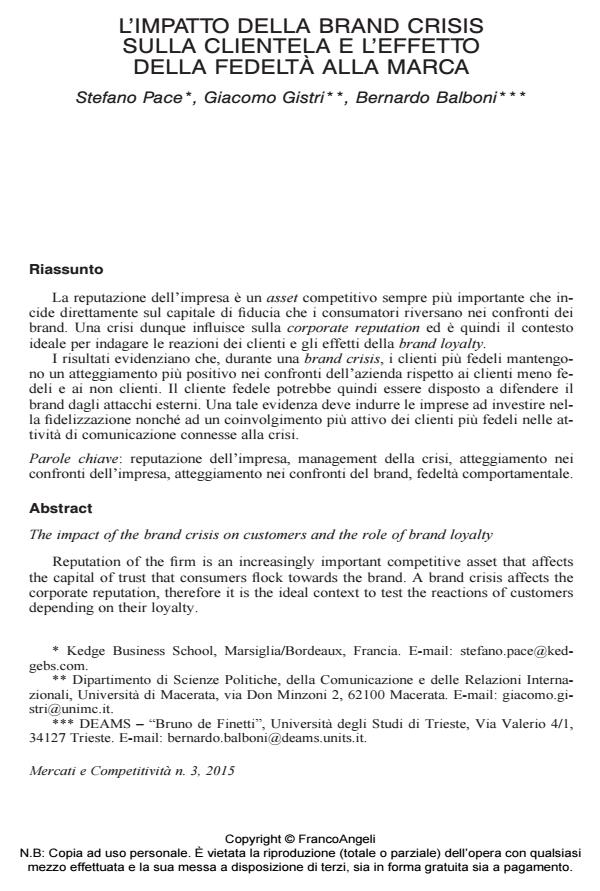The impact of the brand crisis on customers and the role of brand loyalty
Journal title MERCATI E COMPETITIVITÀ
Author/s Stefano Pace, Giacomo Gistri, Bernardo Balboni
Publishing Year 2015 Issue 2015/3
Language Italian Pages 19 P. 103-121 File size 504 KB
DOI 10.3280/MC2015-003006
DOI is like a bar code for intellectual property: to have more infomation
click here
Below, you can see the article first page
If you want to buy this article in PDF format, you can do it, following the instructions to buy download credits

FrancoAngeli is member of Publishers International Linking Association, Inc (PILA), a not-for-profit association which run the CrossRef service enabling links to and from online scholarly content.
Reputation of the firm is an increasingly important competitive asset that affects the capital of trust that consumers flock towards the brand. A brand crisis affects the corporate reputation, therefore it is the ideal context to test the reactions of customers depending on their loyalty. Results show that, during a brand crisis, the most loyal customers maintain a more positive attitude towards the company compared to less loyal customers and non-customers. The results suggest that a loyal customer is willing to defend the brand from external attacks. Such evidence must induce firms to build brand loyalty and involve loyal customers in the management of the brand crisis.
Keywords: Corporate reputation, crisis management, attitude toward the corporate, attitude toward the brand, behavioral loyalty
- Social media strategies to protect brand image and corporate reputation in the digital era: a digital investigation of the Eni vs. Report case Riccardo Rialti, Lamberto Zollo, Alessandro Caliandro, Cristiano Ciappei, in MERCATI & COMPETITIVITÀ 4/2016 pp.65
DOI: 10.3280/MC2016-004005
Stefano Pace, Giacomo Gistri, Bernardo Balboni, L’impatto della brand crisis sulla clientela e l’effetto della fedeltà alla marca in "MERCATI E COMPETITIVITÀ" 3/2015, pp 103-121, DOI: 10.3280/MC2015-003006